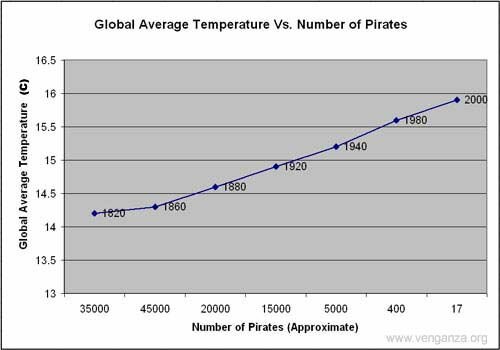http://www.sciencedaily.com/releases/2009/05/090512093542.htm
Nature Geoscience, 2009; 2 (5) said: Global Warming Inadvertently Curbed In Past By Lead Pollution, Scientists Find ScienceDaily (May 13, 2009) — Lead pollution in the air stimulates the formation of ice particles in clouds. A team of scientists from the USA, Germany and Switzerland has found that particles containing lead are excellent seeds for the formation of ice crystals in clouds. This not only has a bearing on the formation of rain and other forms of precipitation but may also have an influence on the global climate. This is because the heat given off from the earth's surface is more efficiently radiated into space by ice clouds (cirrus) with lead-containing particles than has been hitherto realized. In comparison to clouds with a low lead content, clouds with a high lead content thus actually help cool the earth. Over the last twenty years, there has been a continuing decrease in the rate of anthropogenic lead emissions. This may mean that the greenhouse effect is now even more pronounced because lead-containing clouds once previously helped limit it. At the Sphinx Observatory, a Swiss research station on the Jungfraujoch at an altitude of 3,580 meters, scientists from various institutions, including the Universities of Frankfurt and Mainz, and the Max Planck Institute for Chemistry in Mainz, investigated the chemical composition of clouds in the winters of 2006 and 2007. "What mainly interested us was the question of how ice particles form. Water particles in the atmosphere do not simply freeze at zero degrees. On the contrary, at temperatures as low as minus 37 degrees they still need an ice nucleus, for example an aerosol particle, before ice formation is triggered," explains Professor Joachim Curtius of the Institute for Atmosphere and Environment (IAU) at the Goethe University Frankfurt. The same principle is also employed for snow guns, and in this case proteins derived from Pseudomonas bacteria are sometimes used as the ice-forming nuclei – a controversial application. Scientists attach a lot of importance to the presence of ice particles in clouds, as they make a vital contribution to the genesis of rain drops within clouds. "Until we know what kinds of particles trigger ice formation in the atmosphere we will not be able to understand climatic change or the global hydrological cycle," comments Professor Stephan Borrmann. The atmospheric physicist is the head of the "Department of Particle Chemistry,“ a joint venture of the Max Planck Institute for Chemistry and the Institute for Atmospheric Physics at Johannes Gutenberg University Mainz. Investigations conducted on the Swiss Jungfraujoch and in the Rocky Mountains in Colorado have found that particles that contain lead are among the most effective ice nuclei to be found in the atmosphere. "What was really new for us was the remarkable frequency with which we found lead in the ice particles," says Curtius. "We were able to identify lead in around every second ice nucleus while only one in twenty of the average aerosol particles contained lead." However, lead on its own is not enough to form an ice nucleus. Minute lead particles combine with other constituents of the air, such as mineral dust from the Sahara. Some of these mineral dust particles can themselves act as ice nuclei. Once combined with lead, however, a good ice nucleus becomes an outstanding ice nucleus that is able to initiate ice crystallization at higher temperatures and at lower humidities. Laboratory experiments at the AIDA Aerosol and Cloud Chamber at the Karlsruhe Research Center have confirmed the results of the field studies in Switzerland. Furthermore, model calculations by the Swiss Federal Institute of Technology Zurich show that lead-containing particles change the properties of cirrus clouds so that these significantly influence the extent to which long-wave radiation escapes from the earth into space. If all ice-forming mineral particles contained lead, the heat emitted by the earth could theoretically be as much as 0.8 watts per square meter. By way of comparison: The climate forcing generated as a result of anthropogenic CO2 emissions is equivalent to roughly 1.6 watts per square meter. The lead-containing ice nuclei thus presumably have a cooling effect on the climate due to their indirect influence on ice cloud formation. Scientists now assume that as a result of the significantly higher levels of lead pollution in the 1970s and 1980s – resulting from the use of leaded petrol and due to lead emissions from power stations – the great majority of all mineral dust particles were contaminated with lead and as a result more heat escaped from the earth than at present. "This probably led to global inhibition of rises in temperature to some extent, whereas today almost the full greenhouse effect is kicking in," says Curtius. But a return to the lead emission levels of the late 20th century is hardly desirable. Lead is a toxic heavy metal that can cause severe damage to health. "However, with the benefit of hindsight we can now explain why there has been a trend towards more rapid temperature rises in recent years; it is because mankind has cut back its emissions of lead and sulphates," claims Borrmann. "These results show that anthropogenic emissions can influence ice nuclei precipitation and, as a result, change precipitation and the climate," to quote the research results published in Nature Geoscience. Among the institutions participating in the project were Technische Universität Darmstadt, the Leibniz Institute for Tropospheric Research in Leipzig, the Pacific Northwest National Laboratory in Richland/Washington, and the U.S. government agency, the National Oceanic and Atmospheric Administration in Boulder/Colorado. Mainz and Frankfurt Universities, Technische Universität Darmstadt and the Max Planck Institute for Chemistry participated in the project within the context of the Collaborative Research Center 641 "The tropospheric ice phase“ funded by the German Research Foundation (DFG). Journal reference: 1. Cziczo et al. Inadvertent climate modification due to anthropogenic lead. Nature Geoscience, 2009; 2 (5): 333 DOI: 10.1038/ngeo499






































